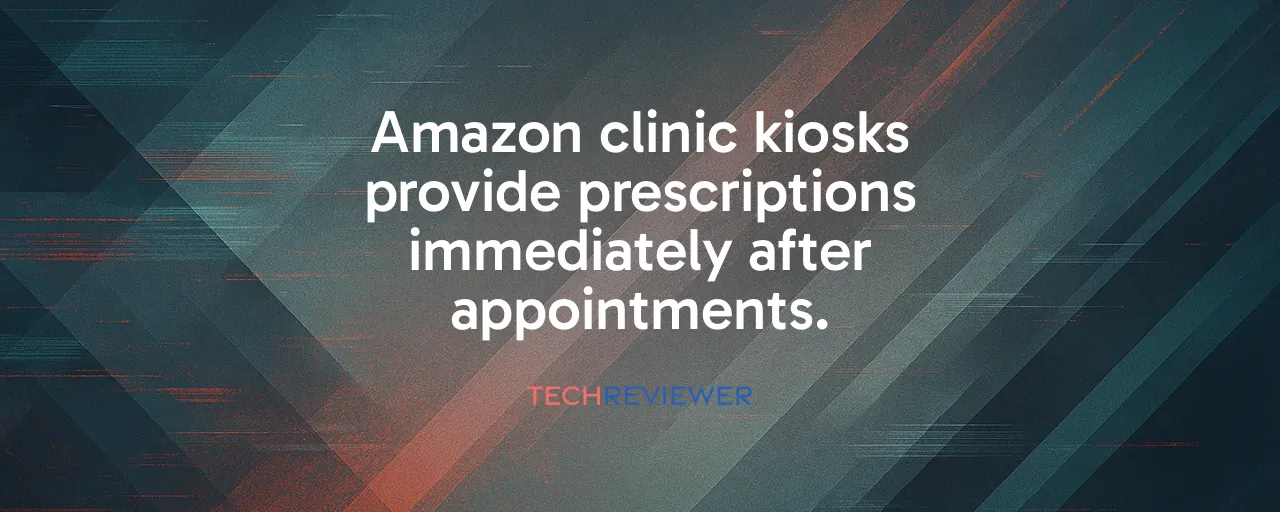Prescriptions at Your Fingertips
Getting a prescription filled used to mean a separate trip to the pharmacy, often with long waits and crossed fingers for stock availability. Amazon is changing that with automated kiosks rolling out at One Medical clinics in Los Angeles this December. Patients can walk out of their doctor's appointment, scan a QR code on their Amazon app, and grab medications like antibiotics or inhalers in minutes. It's a seamless system that ties primary care and pharmacy services into one visit, eliminating the need for extra stops.
The kiosks, stocked with hundreds of common drugs like blood pressure meds and allergy remedies, cater to the most frequent prescriptions written at each clinic. Hannah McClellan Richards, a vice president at Amazon Pharmacy, explained that the machines are customized to match local prescribing patterns, ensuring patients get what they need without delay. For patients who dislike waiting in pharmacy lines, this setup provides tangible convenience.
Why Instant Access Matters
Speed isn't just about convenience; it's about health. Research shows that when patients don't fill prescriptions promptly, they're less likely to stick with their meds long-term. Delays of over 30 days can derail treatment plans, especially for chronic conditions like diabetes or hypertension. Amazon's kiosks tackle this by handing patients their meds before they even leave the clinic, boosting the odds they'll start treatment right away.
Advocate Health Care's approach in Chicago, where vending machines launched in September 2025 target pharmacy deserts, areas where access to meds is scarce. Their machines, paired with virtual pharmacists, ensure residents in underserved neighborhoods get medications fast. Amazon's kiosks follow a similar logic but integrate directly with One Medical's 220 clinics, serving both members paying $199 annually and non-members booking appointments. The result is a system that prioritizes getting meds into patients' hands when it counts most.
Learning From the Competition
Amazon isn't alone in betting on automation. Walgreens, for instance, has leaned heavily into robotic micro-fulfillment centers, processing 16 million prescriptions monthly across 5,000 stores as of 2025. Their system saves roughly $500 million by streamlining operations, letting pharmacists focus on patient care rather than counting pills. But Walgreens' setup serves traditional pharmacies, not clinics, meaning patients still need to make a trip.
Amazon's advantage comes from its ecosystem. By tying kiosks to One Medical's clinics and the Amazon app, it creates a one-stop experience that Walgreens can't match. Yet, Amazon's approach has limits. The kiosks won't stock refrigerated drugs like GLP-1 weight loss meds or controlled substances like painkillers, forcing some patients to rely on traditional pharmacies anyway. Balancing these trade-offs will shape how far Amazon's model can scale.
Challenges and Pushback
Not everyone is sold on the idea. Some pharmacists express concern that automation might diminish their role, reducing face-to-face counseling that catches drug interactions or misuse. Patients without smartphones or tech savvy might struggle with the QR code system, potentially leaving older or less connected folks behind. Then there's the privacy angle: kiosks handle sensitive health data, requiring bulletproof encryption and compliance with HIPAA to keep information safe.
Traditional pharmacies like CVS and Walgreens, already reeling from closures and shrinking margins, see Amazon's move as another blow. After Rite Aid shuttered all its stores in 2024, the pressure is on for brick-and-mortar chains to keep up. Some argue Amazon's focus on urban clinics could widen healthcare gaps, as rural areas may not see kiosks anytime soon. These concerns highlight the need for thoughtful expansion to avoid leaving vulnerable patients behind.
What's Next for Pharmacy Automation
Amazon plans to expand the kiosk model outside of California in 2026, with talks underway to partner with health systems nationwide. The global pharmacy automation market, valued at $6.99 billion in 2025, is set to hit $16.65 billion by 2034, driven by demand for efficiency and accuracy. As healthcare leans harder into tech, anticipate more advanced kiosks with AI-driven inventory tweaks and potentially refrigerated drug capabilities in the future.
For patients, the promise is clear: less waiting, fewer trips, and meds that are ready when you are. For the industry, it's a wake-up call to rethink how prescriptions reach people. Amazon's kiosks may not replace pharmacies entirely, but they're carving out a new path that blends care and convenience in ways that could redefine how we stay healthy.
